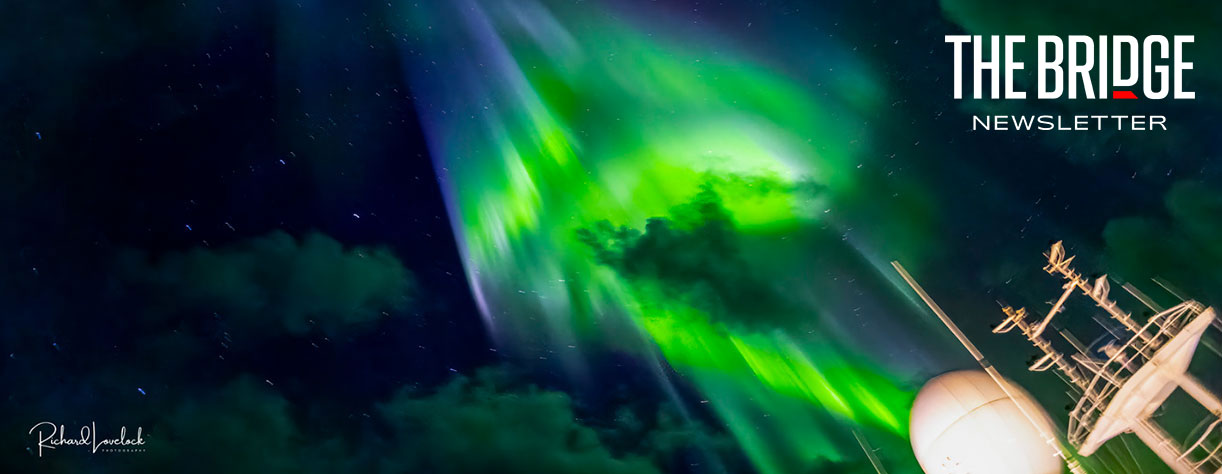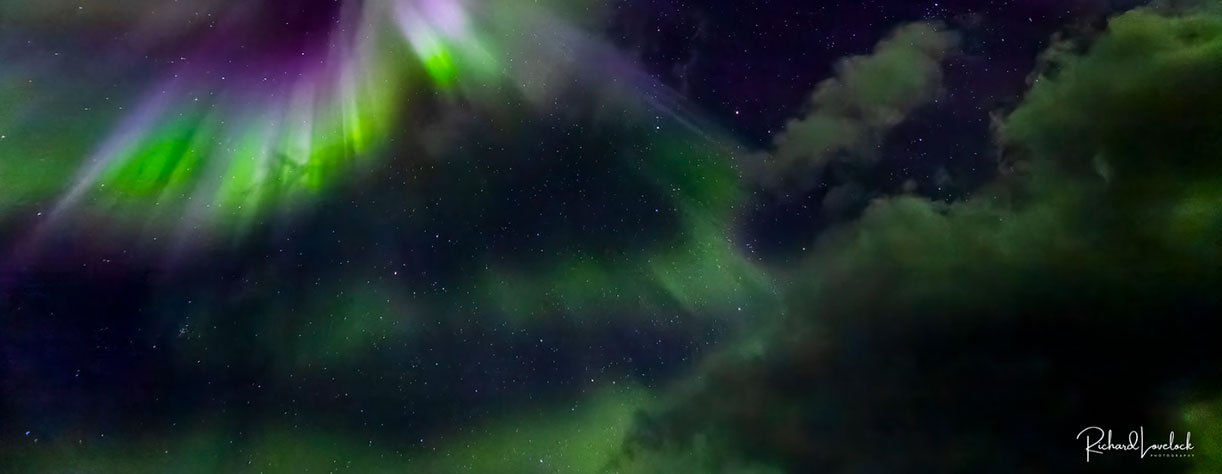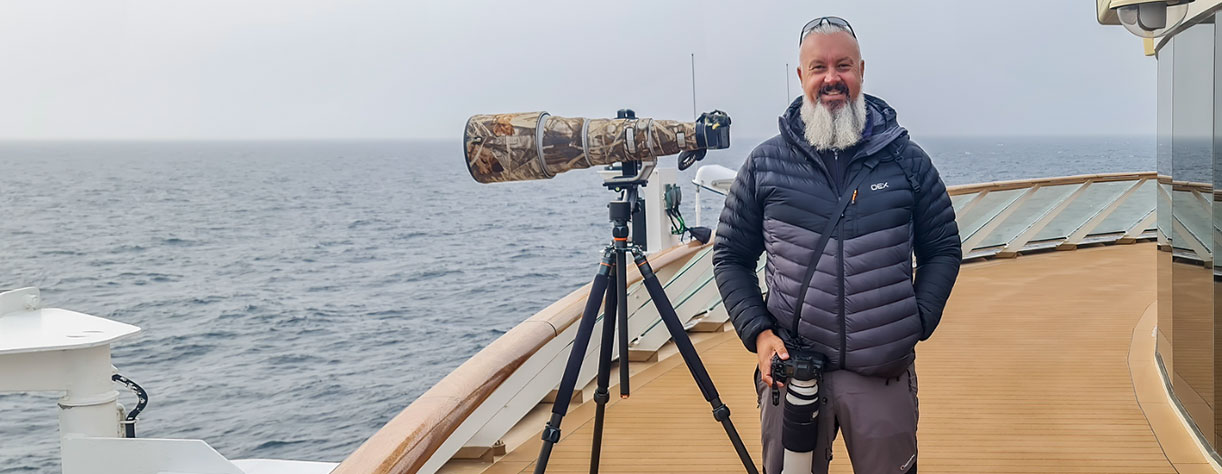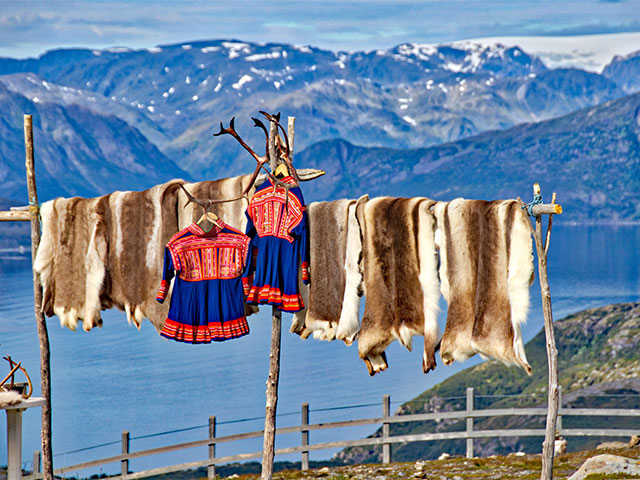A Guide to photographing the Northern Lights
by Photographer and Fred. Olsen Guest Speaker Richard Lovelock
Richard Lovelock has been collaborating with us since 2018 when, whilst travelling on board as one of our guests, we invited him to share some of his photographic images with us. His captivating work has graced the pages of our publications, brochures and social media ever since.
Richard now imparts his photographic wisdom to guests as one of our on-board speakers, with a special focus on capturing wildlife from the ship’s deck. When the sun sets, however, new opportunities arise, particularly the chance to witness the awe-inspiring Aurora Borealis, or Northern Lights, an entry on countless travellers’ bucket lists.
Photographing this celestial spectacle can be challenging – even more so on a moving ship – so we caught up with Richard to gather his expert insights on how to capture this remarkable phenomenon.
Dress for the weather
As memorable as they may be, battling the cold is far from fun, so dress up warmly when venturing out to view the night sky, minding your step in the dark conditions.
Monitor Aurora activity
The likelihood of viewing this natural wonder hinges on weather conditions, and a clear sky is imperative. Equip your smartphone with an aurora forecast app and stay tuned to sighting predictions for optimal chances.
Reduce light pollution
To enhance both your viewing experience and your photographic results, locate a dark spot on the ship with no artificial light sources behind you, and don’t forget to turn off your flash.
Stabilise your device
Regardless of whether you’re using a smartphone or camera, steadying your device is essential. A tripod or any suitable support will significantly improve your outcomes due to the low light conditions.
Smartphone configuration
For smartphone users, there are numerous Aurora photo apps available, eliminating the need for technical expertise by configuring the perfect settings. Alternatively, explore your phone's camera menu for a 'night' feature option if available.
Camera setup
Achieving the perfect shot involves finding the right balance between aperture, shutter speed and ISO settings. Essentially, these controls determine how much light your camera can capture, with more light generally yielding better results. Using a slower shutter speed and increasing the ISO can help to achieve this, but remember to use that tripod or support to prevent camera shake and avoid blurry images.
Focus on the stars
For those who feel confident using ‘manual’ mode, switch to manual focus and set your focus point on a distant star or the moon to achieve near-infinite focus.
Let the light in
For ISO settings, aim for around 3200 or as high as your phone allows. If your device permits, widen the aperture or ‘F-stop’ to its maximum setting to let in more light. While this may not be an option for phones, most cameras can achieve this at F4 or lower. With an ISO of 3200 and the aperture wide open, start with a 15-second shutter speed and adjust this setting based on the results you get.
Reduce the blur
Keep in mind that even though your device will stable supported by a tripod, the movement of a cruise ship may necessitate shorter shutter speed times to prevent image blur. Consider using a remote shutter release or the timer feature to minimise camera shake caused by touching the device during image capture.
Enhance your photos
Afterwards, enhance your images using a photo editor to intensify the colours and darken the sky, bringing out the full glory of the Northern Lights.
Camera versus naked eye
Many people are surprised at the disparity between the Aurora’s appearance to the naked eye and the vibrancy captured by a camera during a weaker display. In essence, you’re granting your camera several seconds to process the view, something your eyes and brain must do instantly.








